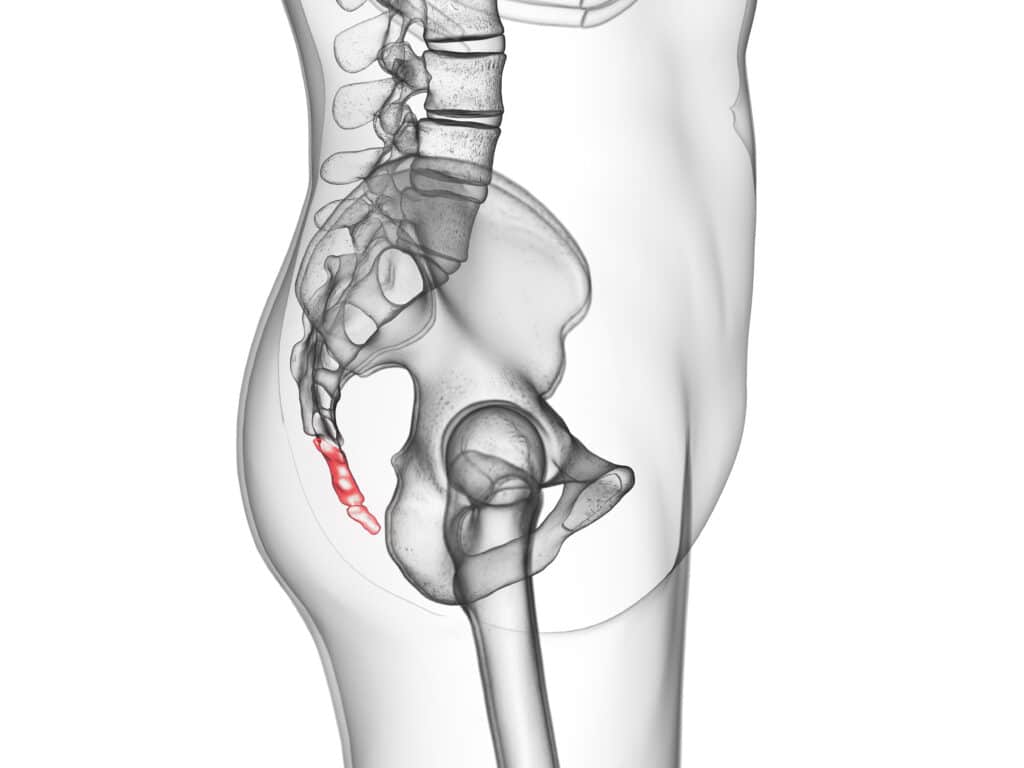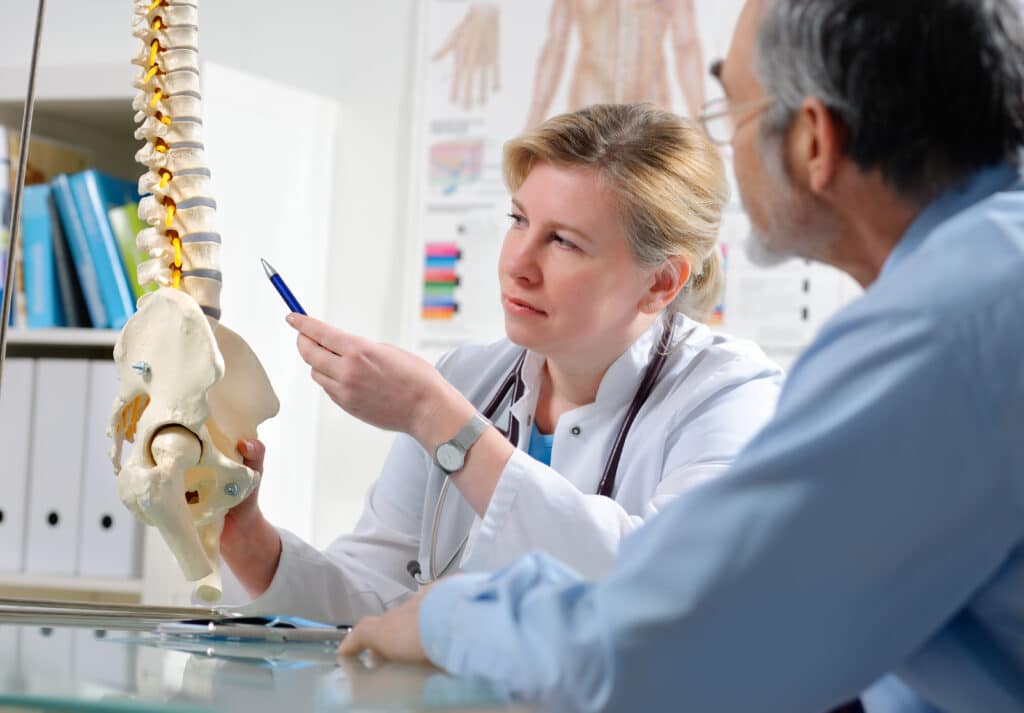How to Treat Tailbone Pain with Physical Therapy
What is the tailbone?
The tailbone may not be the biggest bone in the body, but it can certainly cause a lot of pain. If you have experienced tailbone pain or tailbone spasm with sitting, bowel movements, sexual intercourse, exercise, or any other activity you are likely experiencing coccydynia. This is another name for tailbone pain.
The tailbone, referred to medically as the coccyx, is a small triangle shaped bone that sits at the end of the spine. It serves as an attachment point for muscles, bones, and ligaments in the pelvis, hips and low back. Its central location allows the tailbone to play a role in both stability of the core and mobility of the lower extremities and spine.
Why am I experience tailbone pain?
Tailbone pain can be either traumatic or nontraumatic in nature. You don’t always have to have a fall or injury to have tailbone pain, in fact most people have no idea why their tailbone started hurting. Non traumatic tailbone pain can be caused by sitting for a long time in a hard chair. Tailbone pain can also be caused by hyper or hypomobility, degenerative joint disease, or overactive pelvic floor muscles pulling on the tailbone.

The tailbone can also become broken, dislocated, misaligned or bruised in a variety of different ways. Some common trauma include:
- Traumatic injury
- Fall backward onto your bottom
- Car accident
- Pregnancy and childbirth
- Horseback riding on a bumpy trail
Thankfully, all of these types of tailbone pain can be successfully treated with pelvic floor physical therapy.
What will physical therapy for my tailbone be like? Can I go to any PT?
While all physical therapists know what the tailbone is, it is important to find someone that is experienced in treating the coccyx both internally and externally!
People are often get uncomfortable with the combination of external and internal therapies. This discomfort, experienced by both clinicians and patients, is why many people have trouble finding relief from their pain. It’s normal and necessary to talk about your tailbone pain and potential treatment options openly with your medical team.

Look for a PT that you can be open and candid with. Internal treatment to the coccyx and surrounding pelvic floor muscles can often make a huge difference in your pain. Also find a PT that has the ability to address the painful structure the best way possible. This often involves treatment either vaginally or rectally.
At AtlantaPT, we have the unique ability to treat patients for tailbone pain through orthopedic and pelvic floor physical therapy.
What will my first visit be like?
On your first visit, the pelvic physical therapist will take a thorough history of your current complaints surrounding your tailbone pain.

Your therapist will complete a musculoskeletal and movement screen to determine what else may be contributing to your pain including palpating muscles, analyzing posture, and assessing mobility and strength. If indicated, your physical therapist may want to do an internal assessment to determine the alignment of your tailbone, the health of your surrounding pelvic structures including muscles, nerves, and ligaments, and determine if there are any other internal contributing factors to your condition.
An internal examination is always optional! Based on her findings, your therapist will provide you with extensive education about your condition and likely some exercises or gentle stretches to perform on your own at home outside of scheduled PT visits.
What can my physical therapist do to help my tailbone pain?
A physical therapist has many interventions that can help with tailbone pain. This list is just an idea of some things that your physical therapist at AtlantaPT may do to decrease your pain:
- Realignment of the coccyx, SI joint, and pelvis if the therapist finds them out of their optimal position
- Mobilizations to the tailbone that can be either internal and/or external including gentle distraction
- Manual therapy including soft tissue work and myofascial release to the muscles surrounding the tailbone (internal or external)
- Stretches and exercises to relax the pelvic floor, hip muscles, and back muscles
- Exercises for any other contributing factors located around the tailbone including (for example: hip or core strengthening)
- Pain relief strategies including cushions for sitting and use of ice or heat
- Restore bowel and bladder health
Have you been living with tailbone pain for far too long? Have you tried physical therapy for tailbone pain before that didn’t help? Call to schedule pelvic floor physical therapy today: 770.989.1405.
